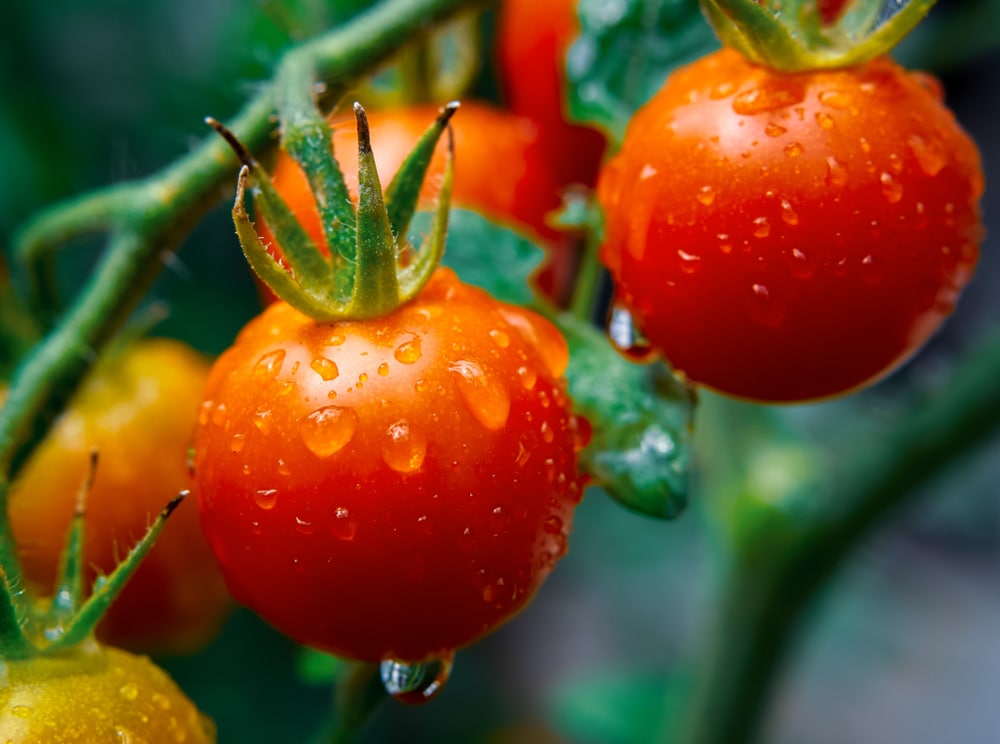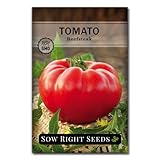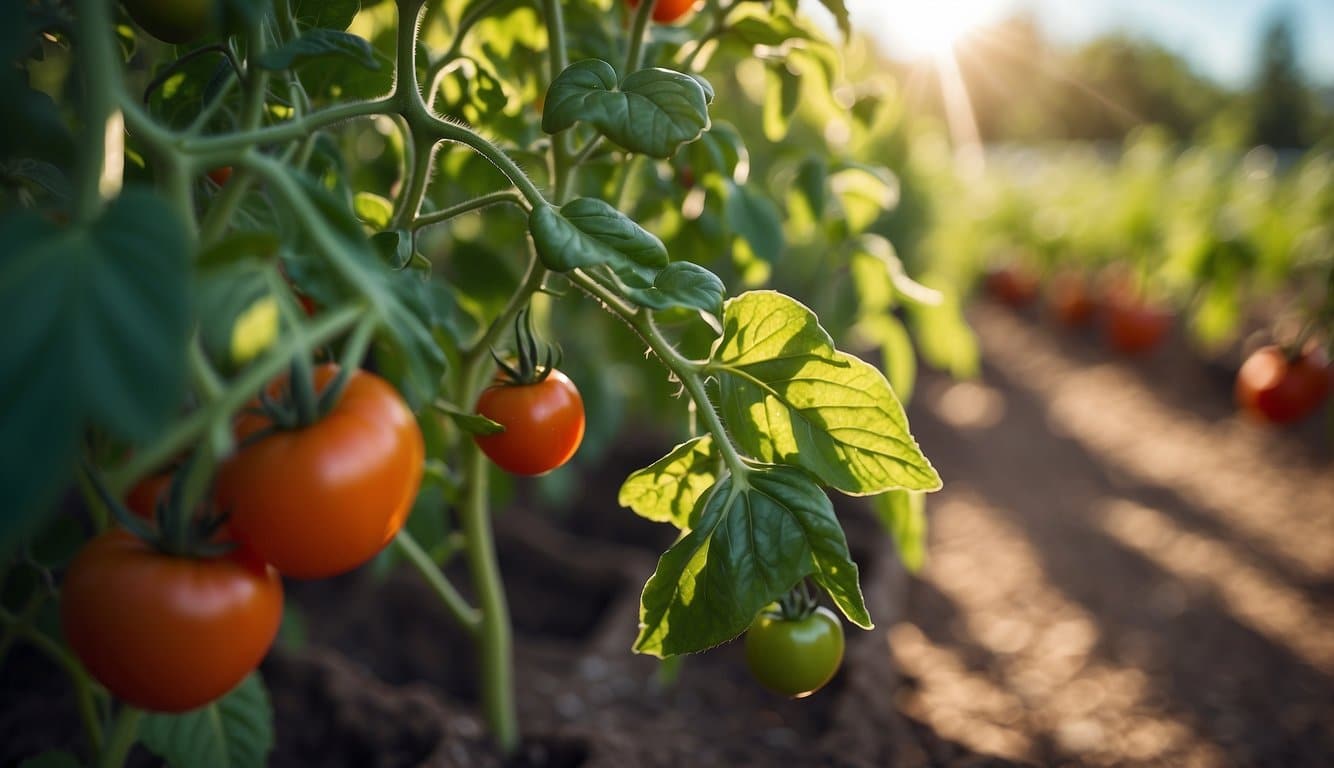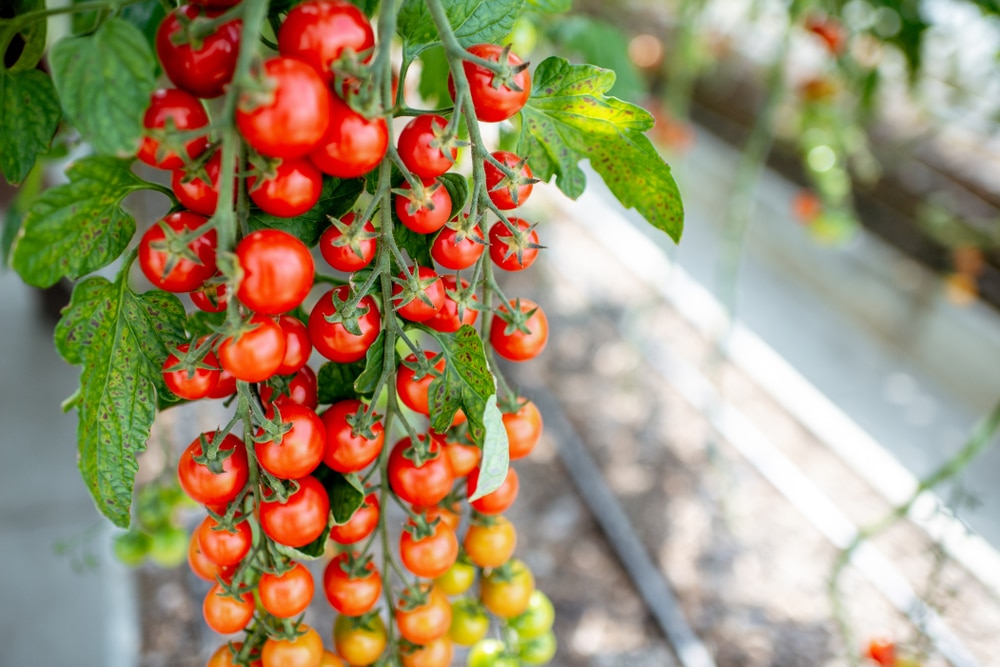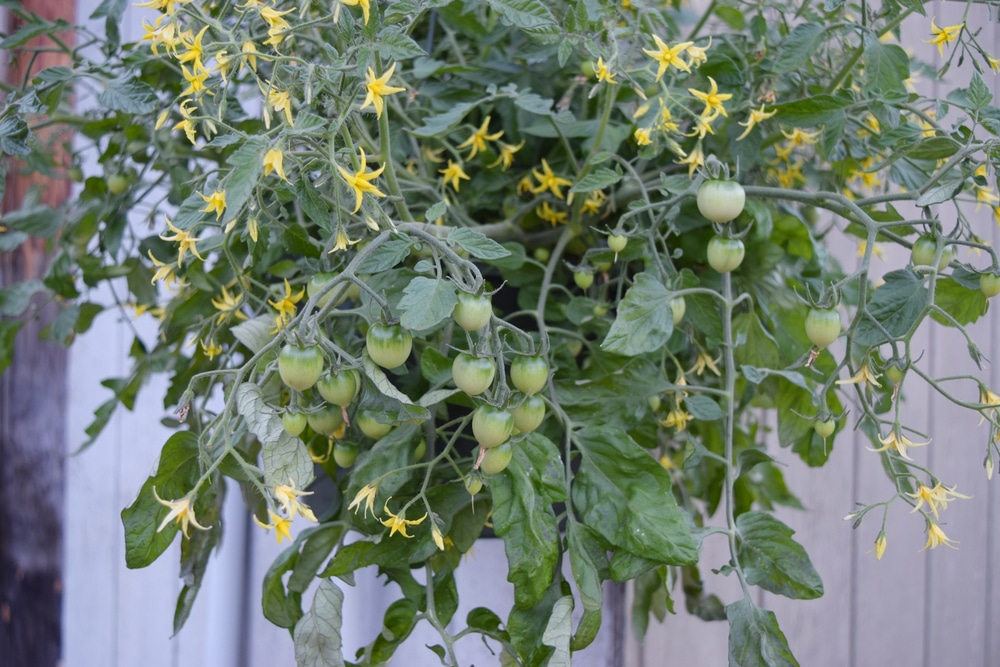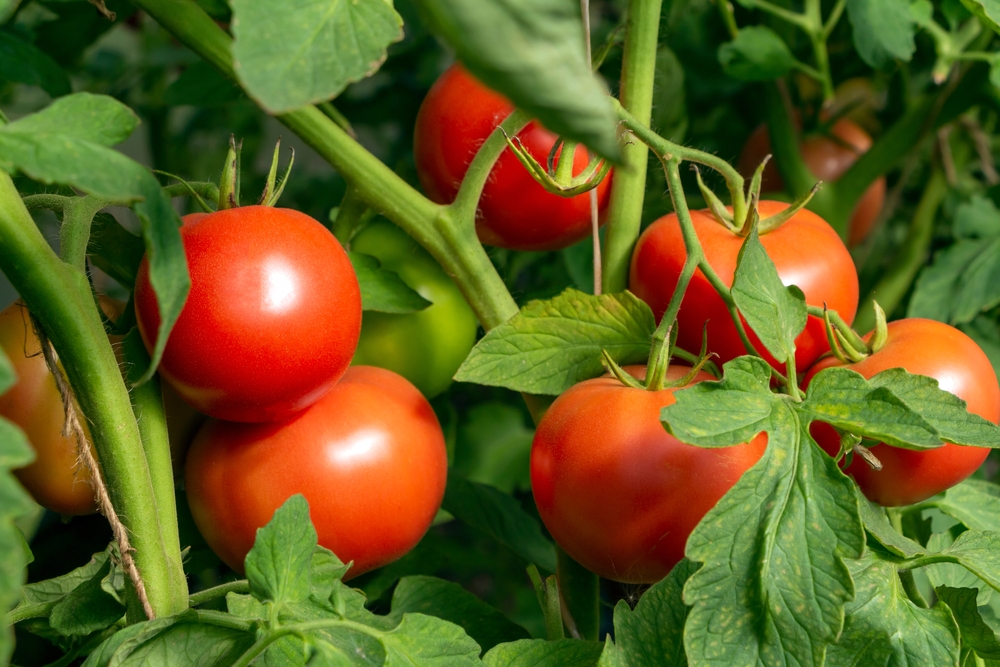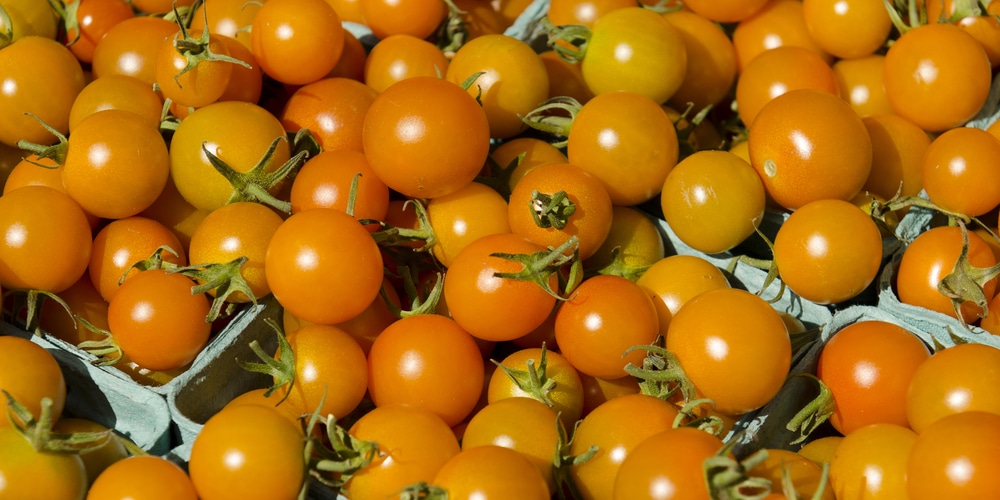| Question | What’s the best time of year to plant tomatoes in Arizona? |
|---|---|
| Answer | Varies by region due to diverse climate zones. |
| More Info |
|
In Arizona, given its diverse climate zones, the best time to plant tomatoes varies significantly across the state.
In lower elevation areas and the desert regions, tomatoes are best planted from late February through March, after the danger of frost has passed.
For higher elevations and cooler areas, wait until mid-April to late May.
Arizona gardeners may also consider a fall planting in July or early August to avoid the peak summer heat, which can be detrimental to tomato plants. Starting seeds indoors can give your plants a head start, especially in the cooler parts of the state.
What Tomato Varieties Thrive in AZ?
Arizona’s climate presents a unique set of challenges for tomato growers, yet certain varieties have proven to thrive in this environment. Gardeners in Arizona can achieve a bountiful harvest with the following tomato varieties:
- Cherry Tomatoes: Particularly well-suited due to their heat tolerance, cherry tomato varieties such as Sun Gold offer golden-orange fruits that stand up well to Arizona’s intense sun.
- Hybrid Tomatoes: Varieties like Better Boy are favored for their adaptability and reliability across a range of climates, including the arid heat of Arizona. They also exhibit good resistance to common tomato ailments.
Here is a breakdown of some top performers:
| Variety | Color | Characteristics |
|---|---|---|
| Sun Gold | Orange | Sweet flavor, resistant to cracking, productive |
| Better Boy | Red | Adaptable, disease-resistant, consistently sized |
Gardeners should note that while most tomatoes can adapt to various soil types, they typically prefer loamy, well-drained soil. Tomato plants in Arizona need regular watering, especially during hot spells, to ensure deep soil moisture is maintained. It’s crucial to provide an adequate water supply, about 1 to 1.5 inches per square foot of soil per week, ideally watering in the morning to allow for evaporation and to prevent diseases associated with moisture. With careful selection and proper care, these and other varieties will reward Arizona gardeners with a vibrant and tasty tomato harvest.
Arizona’s Climate and Tomatoes
Arizona’s diverse climate presents both opportunities and challenges for tomato growers. Understanding the state’s seasonal weather patterns and temperature fluctuations is critical for cultivating tomatoes successfully.
Temperature Fluctuations
In Arizona, daytime temperatures conducive to tomato growth range between 70℉ to 90℉, while night temperatures should stay consistently above 55℉. The state’s climate can see temperatures soar, making pollen unviable at 90℉ and above. It’s crucial for tomatoes to flower and set fruit before the hottest months, as high temperatures can prevent new fruit from setting.
- Optimal Growing Temperature: 70℉ to 90℉ during the day
- Minimum Night Temperature: Above 55℉
Seasonal Weather Patterns
Arizona is broadly categorized into three climate zones: low desert, high desert, and mountain zones. Each has distinct seasonal weather patterns affecting tomato cultivation timelines.
- Low Desert: Plant in late winter or early spring (Feb-Mar).
- High Desert: Waiting until the danger of frost has passed is recommended, which is typically later than the low desert areas.
- Mountain Zone: The window for planting is narrower, with May to early June being ideal after the last frost dates.
Tomato growers should also account for the average frost-free days:
- North Arizona: Approximately 290 frost-free days
- South Arizona: Up to 340 frost-free days
By aligning tomato planting schedules with Arizona’s climate nuances, growers can enhance their chances of a fruitful harvest.
Preparing for Planting
Before planting tomatoes in Arizona, gardeners should focus on soil preparation and selecting appropriate tomato varieties. These initial steps are crucial for a successful harvest.
Soil Preparation
The quality of soil in Arizona can vary; therefore, gardeners must enrich the soil to ensure a healthy growth environment for tomatoes. To begin, one should test the soil to understand its pH level and nutrient content. For optimal tomato growth, the soil should have a pH between 6.0 and 7.0. Amending the soil with compost or organic matter will improve drainage, aeration, and nutrient content. Additionally, integrating a balanced 10-10-10 fertilizer can provide necessary nutrients for the tomatoes to flourish.
Choosing the Right Tomato Varieties
Arizona’s climate demands that gardeners choose tomato varieties that can withstand the heat. The Celebrity, Roma, and Cherry tomatoes are among the top picks for their ability to produce fruit in hot, dry conditions. When planning, consider the local frost-free dates:
- Low desert areas: Begin planting in mid-February.
- Higher elevations: Start in mid-March.
Gardeners should select varieties based on their growth cycle and ensure they align with Arizona’s temperature range to enable pollination and fruit setting before the extreme heat sets in.
When to Plant
In Arizona, the timing for planting tomatoes is critical to ensure pollination before temperatures soar. Gardeners need to balance soil warmth and expected temperatures for successful tomato crops.
Spring Planting Guidelines
Spring presents the main planting season for tomatoes in Arizona. Gardeners should plant tomatoes when the soil temperature is consistently at or above 65°F, generally from mid-February to March in the low desert regions like Phoenix and Tucson. Here’s a more specific timeframe for planting:
- Mid-February to late February: Begin planting in the lower desert areas where the frost date has passed and soil temperatures are ideal.
- March: Transition period for planting as soil warmth is more established.
To help ensure that tomato plants have time to flower and set fruit, gardeners should aim to have their tomatoes in the ground well before daily temperatures begin to exceed 90°F.
Fall Planting Considerations
Fall plantings can also be successful, particularly if gardeners aim for the fruit to mature before the first frost dates of late autumn or early winter. Planting dates for a fall crop can range from late July to early August. Here’s a quick reference:
- Late July to early August: Start fall tomato crops, considering faster-maturing varieties to ensure harvest before cooling temperatures set in.
- By September: Planting should be completed to allow tomatoes to set fruit.
For both spring and fall planting, selection of the tomato variety is essential. Gardeners should choose varieties that are well-suited to Arizona’s climate and can mature within the growing season.
Care and Maintenance Post-Planting
Successful tomato cultivation in Arizona requires attentive post-planting care to ensure bountiful yields and healthy plants. Gardeners need to navigate the intricacies of watering, pest and disease control, and plant support to thrive in the unique climate.
Watering Best Practices
Tomatoes demand consistent moisture levels post-planting, especially in Arizona’s arid environment. Gardeners should aim to provide deep, infrequent watering to encourage strong root development. It is critical to water the plants early in the morning to reduce evaporation and avoid wetting the foliage, which can lead to fungal diseases. A weekly inch of water, whether from rainfall or irrigation, is recommended, though daily watering may become necessary during periods of extreme heat.
Dealing with Pests and Diseases
Vigilance in detecting early signs of pests and diseases can save a tomato crop from disaster. Gardeners should regularly inspect tomato plants for common pests such as aphids, hornworms, whiteflies, and spider mites. For controlling these pests, one may consider introducing beneficial insects like ladybugs or applying insecticidal soap. To avoid diseases like blight or wilt, they should ensure proper plant spacing for airflow and practice crop rotation each season. Immediate removal of infected plants or leaves can prevent the spread of diseases.
Supporting Tomato Plants
As tomato plants grow, they require support to keep fruit off the ground and prevent stem breakage. Options include sturdy cages, trellises, or stakes. Gardeners should install these supports at the time of planting to avoid root disturbance later on. Regularly securing the growing stems with ties or clips will help maintain plant structure and improve sun exposure and air circulation throughout the foliage.
Frequently Asked Questions
In Arizona, timing and choosing the right varieties are crucial to successfully grow tomatoes. Gardeners often have specific questions about planting in the unique climate conditions of Arizona.
What month is ideal for planting tomatoes in Phoenix, Arizona?
In Phoenix, gardeners should aim to plant tomatoes after the last frost, typically from mid-February to early March. They must ensure that seedlings are ready to be transplanted outdoors at this time.
Which varieties of tomatoes are best suited for the climate in Tucson, Arizona?
For Tucson’s warm climate, heat-tolerant tomato varieties like ‘Cherry’, ‘Roma’, and ‘Beefsteak’ perform well. These selections are more capable of withstanding the high temperatures.
Are there any specific tips for growing tomatoes in containers within the Arizona region?
When growing tomatoes in containers in Arizona, one should select a pot that is at least 18 inches in diameter, use a high-quality potting mix, and ensure there is ample drainage. Regular watering is essential due to the containers’ quicker drying tendency.
How does one successfully grow tomatoes during the fall season in Phoenix?
To grow tomatoes in Phoenix during the fall, one should plant transplants by late July or early August. This allows the plants to establish and produce fruit before the colder temperatures of late fall.
Could you provide advice on cultivating tomatoes in Arizona’s desert conditions?
Tomato plants in desert conditions require mulching to conserve moisture, shading to protect from intense sun, and consistent, deep watering to encourage a strong root system.
Are there heat-resistant tomato varieties recommended for the Arizona summer climate?
Gardeners in Arizona should consider heat-resistant varieties like ‘Solar Fire’, ‘Heatwave II’, or ‘Phoenix’, which are bred to set fruit even in high temperatures, making them ideal for the summer climate.
Last update on 2025-06-06 / Affiliate links / Images from Amazon Product Advertising API
